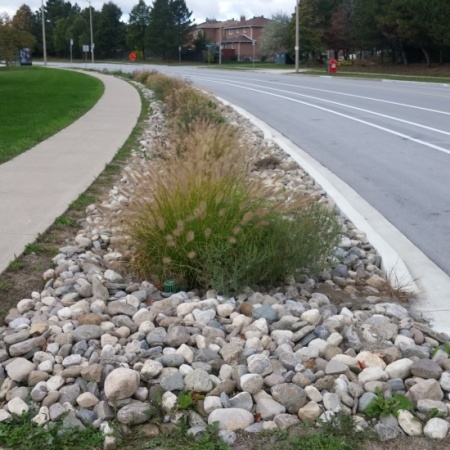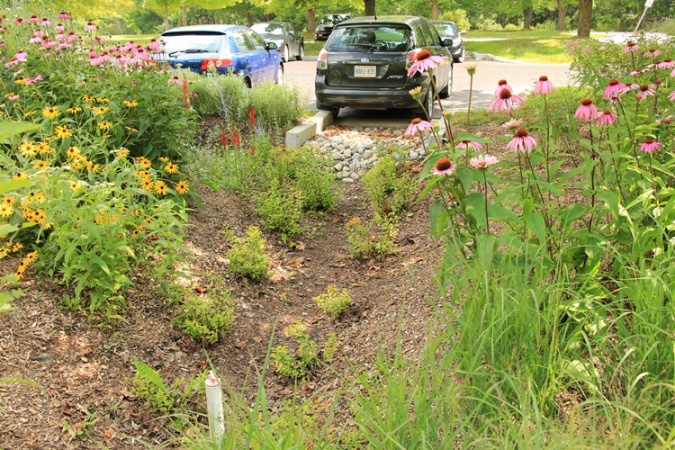Swales
Revision as of 19:56, 22 June 2017 by Jenny Hill (talk | contribs)
This article is about planted installations designed to capture and convey surface runoff through an engineered soil with subterranean infrastructure.
Overview[edit]
Swales are linear landscape features consisting of a drainage channel with gently sloping sides. Underground they are filled with engineered soil and a water storage layer of coarse gravel material.
They are sometimes referred to as 'dry swales', 'vegetated swales', 'water quality swales' or 'inline bioretention'.
Swales are an ideal technology for:
- Sites with long linear landscaped areas, such as parking lots
- Connecting with one or more other types of LID
The fundamental components of a swale are:
- graded channel
- planting
Additional components may include:
- Biomedia - an engineered soil mix
- Planting
- Underdrain with clean out and inspection ports
- Impermeable membrane to prevent infiltration to soils below
- Check dams
Planning Considerations[edit]
Planning Content
Design[edit]
Design Content
<panelSuccess>
</panelSuccess>
Performance[edit]
Performance Content
| Property | Bioswale | Enhanced Grass Swale |
|---|---|---|
| Surface water | Minimal Any surface flow can be slowed with check dams | Ponding encouraged with check dams |
| Engineered soil | Biomedia required | Amendment preferable when possible |
| Udnerdrain | Common | Uncommon |
| Maintenance | Medium to high | Low |
| Stormwater benefit | High | Medium |
| Biodiversity benefit | Increased with native planting | Lower |
| SEND US YOUR QUESTIONS & FEEDBACK ABOUT THIS PAGE |

